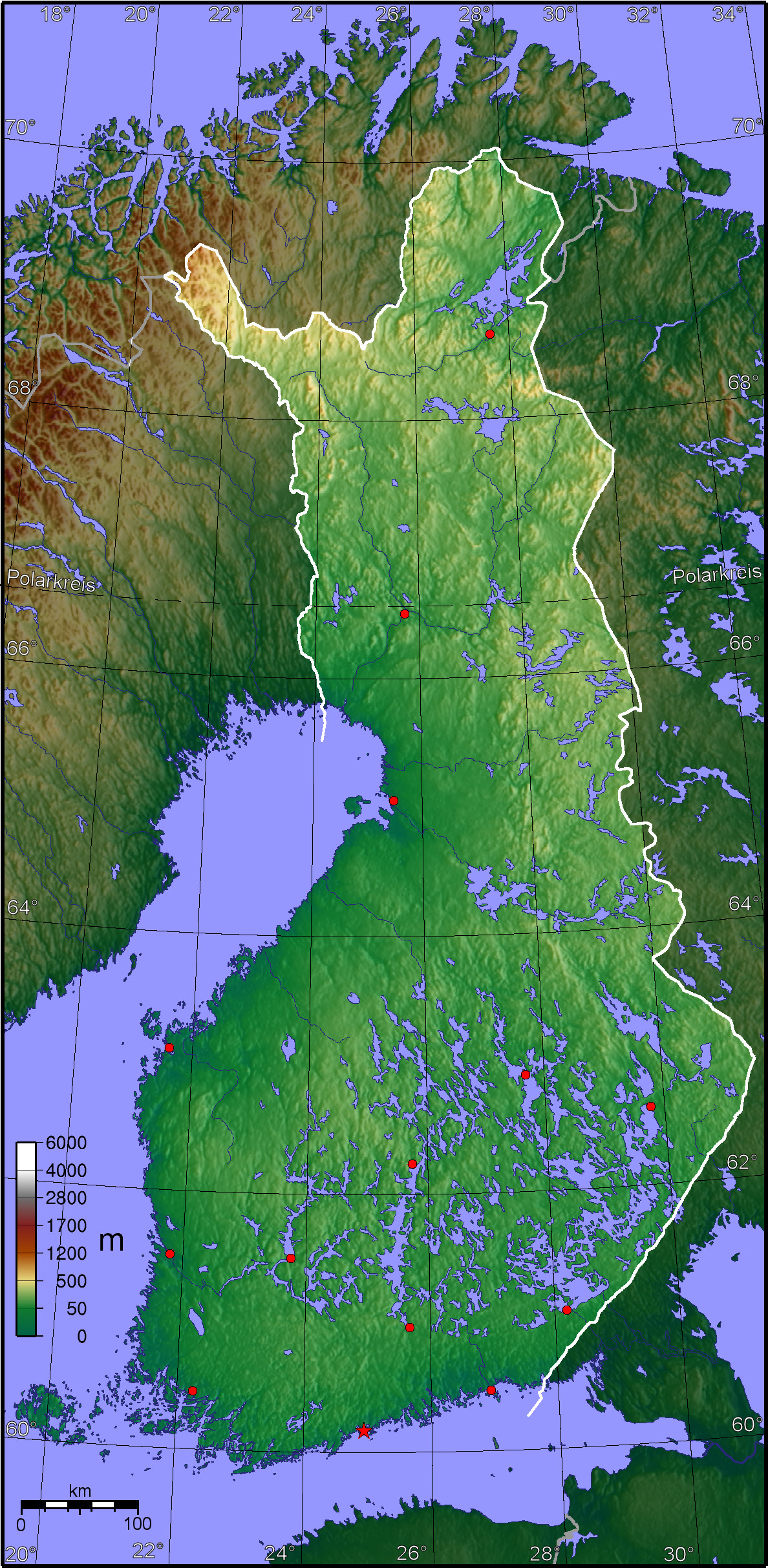|
Livojärvi
Livojärvi is a medium-sized lake in the Iijoki main catchment area. It is located in Posio municipality, in the Lapland region in Finland.Livojärvi in Järviwiki Web Service . Retrieved 2014-03-22. Quality of water is good. See also *List of lakes in Finland
Most lakes in Finland are small, but there are 309 lakes or reservoirs with a surface area larger than 10 km². There are about 5,600 lakes i ...
[...More Info...] [...Related Items...] OR: [Wikipedia] [Google] [Baidu] |
Posio
Posio is a municipality of Finland. It is located in the province of Lapland. The municipality has a population of () and covers an area of of which is water. The population density is . Neighbour municipalities are Rovaniemi, Kemijärvi, Ranua, Salla, Kuusamo, Taivalkoski and Pudasjärvi. The municipality has a single language, Finnish. Major employers in Posio are the municipality itself, a major pottery manufacturer Pentik and agriculture (especially dairy farming). The European route E63 runs through the northern-eastern parts of the municipality. Korouoma canyon and natural reserve is located in Posio. north of the center of Posio is a microstate A microstate or ministate is a sovereign state having a very small population or land area, usually both. However, the meanings of "state" and "very small" are not well-defined in international law. Some recent attempts to define microstates ... called , founded by Ari "Paska" Peltonen in 2006. [...More Info...] [...Related Items...] OR: [Wikipedia] [Google] [Baidu] |
List Of Lakes In Finland
Most lakes in Finland are small, but there are 309 lakes or reservoirs with a surface area larger than 10 km². There are about 5,600 lakes in Finland that are larger than 0.1 km² (10 hectares or 100'000 square metres), and 187,888 lakes larger than five ares (500 square metres / 5,382 sq.ft.). There is no standard unambiguous definition of the size requirements for a water body to be classified as a lake. Saimaa is the largest lake in Finland, and the fourth-largest natural freshwater lake in Europe. They are listed here along with some smaller noteworthy lakes. Alphabetical listing A Aapajärvi, Ala-Kintaus, Ala-Kitka B Bodominjärvi E Elämäjärvi, Enäjärvi, Enijärvi, Enonvesi, Evijärvi H Haapajärvi, Hankavesi, Hankavesi – Lonkari, Hankavesi-Välivesi, Hauhonselkä, Haukivesi, Hiidenvesi, Hiirenvesi, Hirvijärvi Reservoir, Hirvijärvi – Kalliovesi, Höytiäinen, Hyrynjärvi I Iijärvi (1), Iijärvi (2), Iijärvi (3), Iijärvi ... [...More Info...] [...Related Items...] OR: [Wikipedia] [Google] [Baidu] |
Iijoki
Iijoki () is a river of Finland in the region of North Ostrobothnia. The river has many tributaries. Facta (encyclopedia) part 6, page 390, ''finnish'' It flows for into the Gulf of Bothnia. Some of its main tributaries are Siuruanjoki and Livojoki. It has about 150 rapids. See also *List of rivers in Finland References Further reading Kalle Päätalo Kaarlo (Kalle) Alvar Päätalo (11 November 1919 – 20 November 2000) was a Finnish novelist, the most popular Finnish writer in the 20th century. His ''Iijoki'' series, comprising 26 novels, is one of the longest autobiographical works ever ... has written a 26 part novel; ''Juuret Iijoen törmässä''. External links Rivers of Finland Landforms of North Ostrobothnia Taivalkoski Ii Rivers of Kuusamo Rivers of Pudasjärvi Rivers of Oulu {{Finland-river-stub ... [...More Info...] [...Related Items...] OR: [Wikipedia] [Google] [Baidu] |
Finland
Finland, officially the Republic of Finland, is a Nordic country in Northern Europe. It borders Sweden to the northwest, Norway to the north, and Russia to the east, with the Gulf of Bothnia to the west and the Gulf of Finland to the south, opposite Estonia. Finland has a population of 5.6 million. Its capital and largest city is Helsinki. The majority of the population are Finns, ethnic Finns. The official languages are Finnish language, Finnish and Swedish language, Swedish; 84.1 percent of the population speak the first as their mother tongue and 5.1 percent the latter. Finland's climate varies from humid continental climate, humid continental in the south to boreal climate, boreal in the north. The land cover is predominantly boreal forest biome, with List of lakes of Finland, more than 180,000 recorded lakes. Finland was first settled around 9000 BC after the Last Glacial Period, last Ice Age. During the Stone Age, various cultures emerged, distinguished by differen ... [...More Info...] [...Related Items...] OR: [Wikipedia] [Google] [Baidu] |
Lapland (Finland)
Lapland is the largest and northernmost region of Finland. The 21 municipalities in the region cooperate in a Regional Council. Lapland borders the Finnish region of North Ostrobothnia in the south. It also borders the Gulf of Bothnia, Norrbotten County in Sweden, Finnmark County and Troms County in Norway, and Murmansk Oblast and the Republic of Karelia in Russia. The topography of Lapland varies from vast mires and forests in the south to fells in the north. The Arctic Circle crosses Lapland, so polar phenomena such as the midnight sun and polar night can be viewed in this region. Lapland's cold and wintry climate, coupled with its relative abundance of conifer trees such as pines and spruces, means that it has become associated with Christmas in some countries, most notably the United Kingdom, and holidays to Lapland are common towards the end of the year. However, the Lapland region has developed its infrastructure for year-round tourism. For example, in 2019, tour ... [...More Info...] [...Related Items...] OR: [Wikipedia] [Google] [Baidu] |
Finnish Environment Institute
The Finnish Environment Institute (SYKE) (, ) is a multidisciplinary research and expert institute under the Ministry of the Environment, Finland. SYKE has four office and research facilities in Helsinki, Oulu, Jyväskylä and Joensuu Joensuu (; ; ) is a city in Finland and the regional capital of North Karelia. It is located in the eastern interior of the country and in the Finnish Lakeland. The population of Joensuu is approximately , while the sub-region has a population .... References External linksIntroduction to the Finnish Environment Institute SYKE Government of Finland Environmental organisations based in Finland {{Finland-gov-stub ... [...More Info...] [...Related Items...] OR: [Wikipedia] [Google] [Baidu] |

